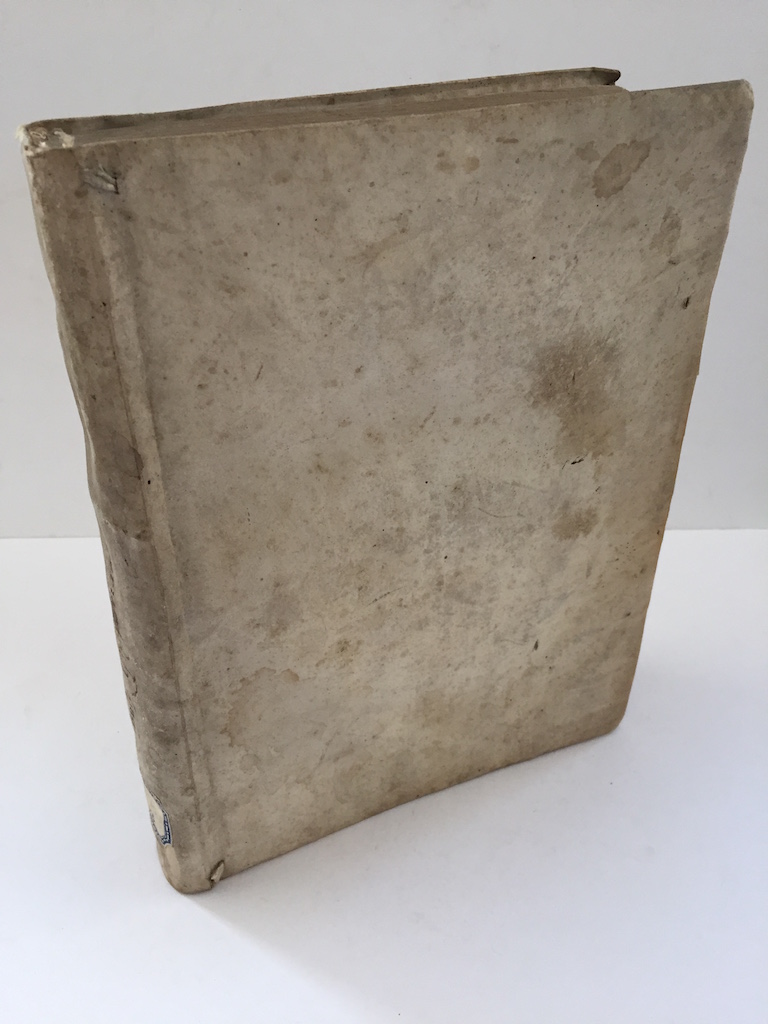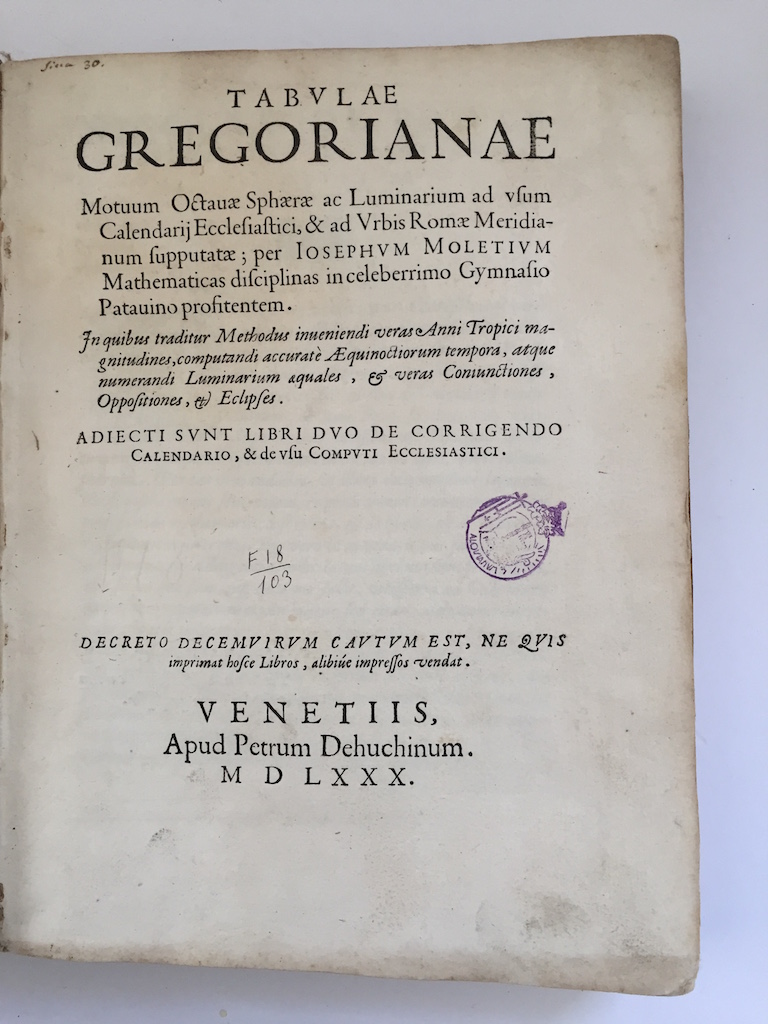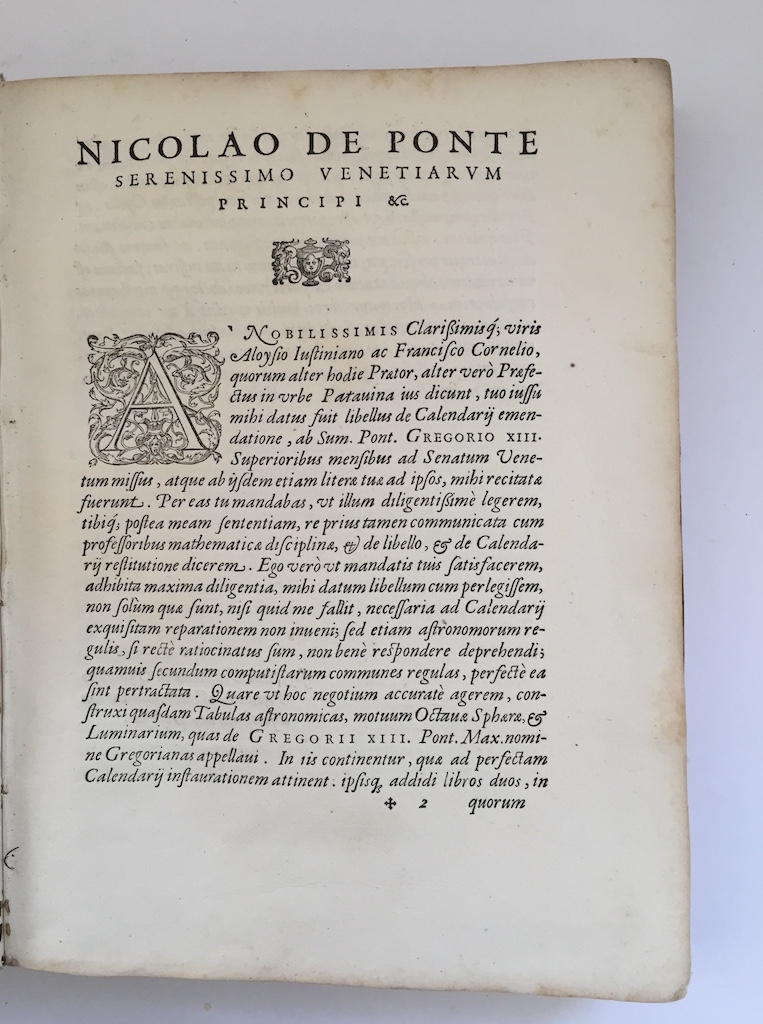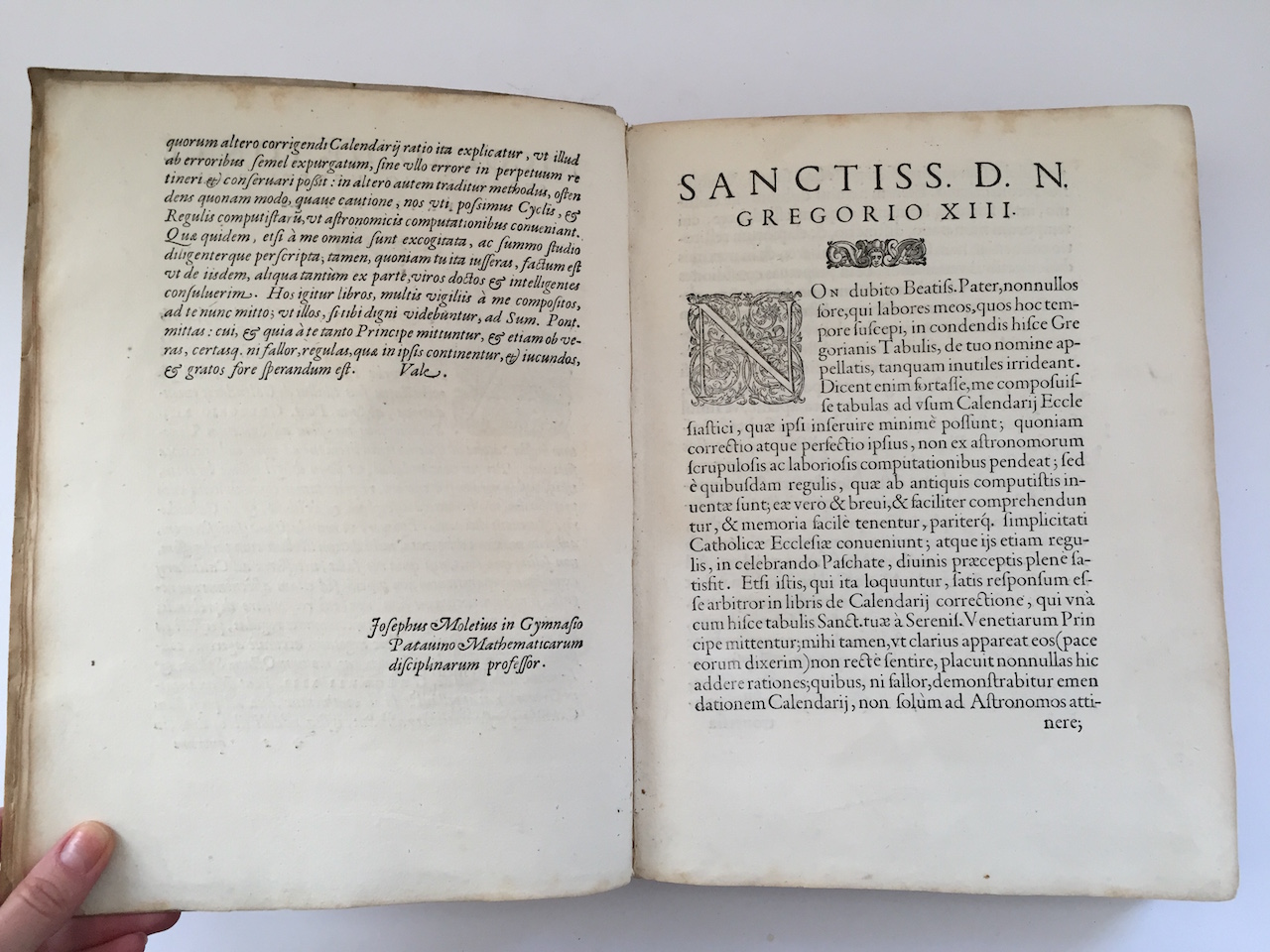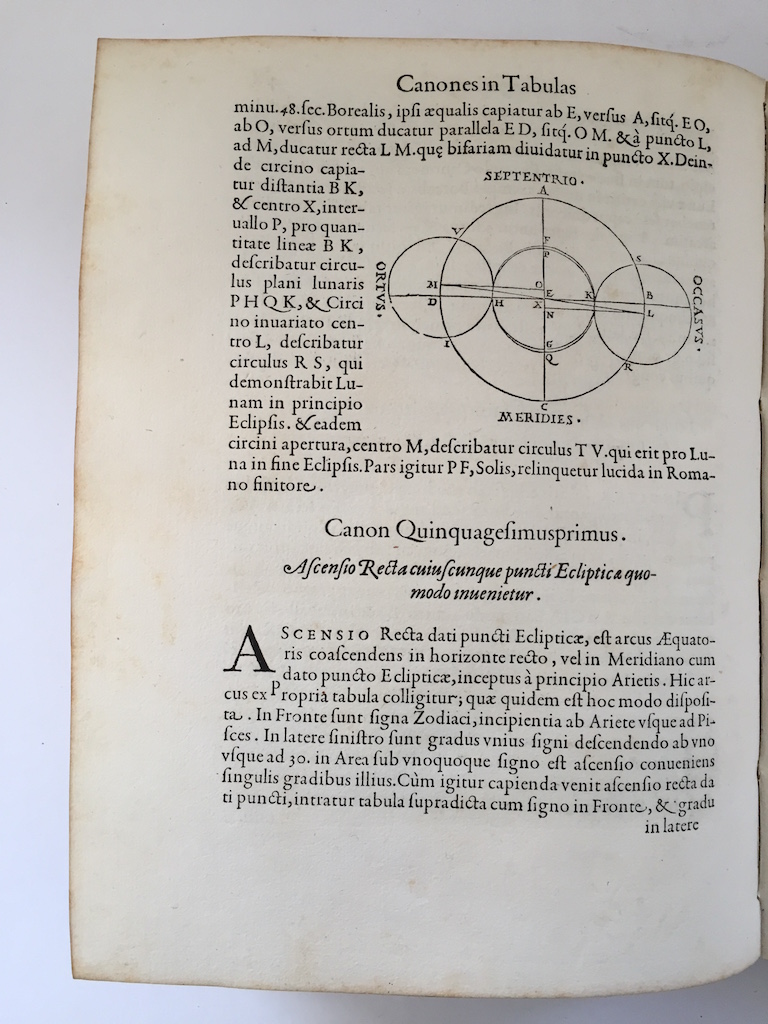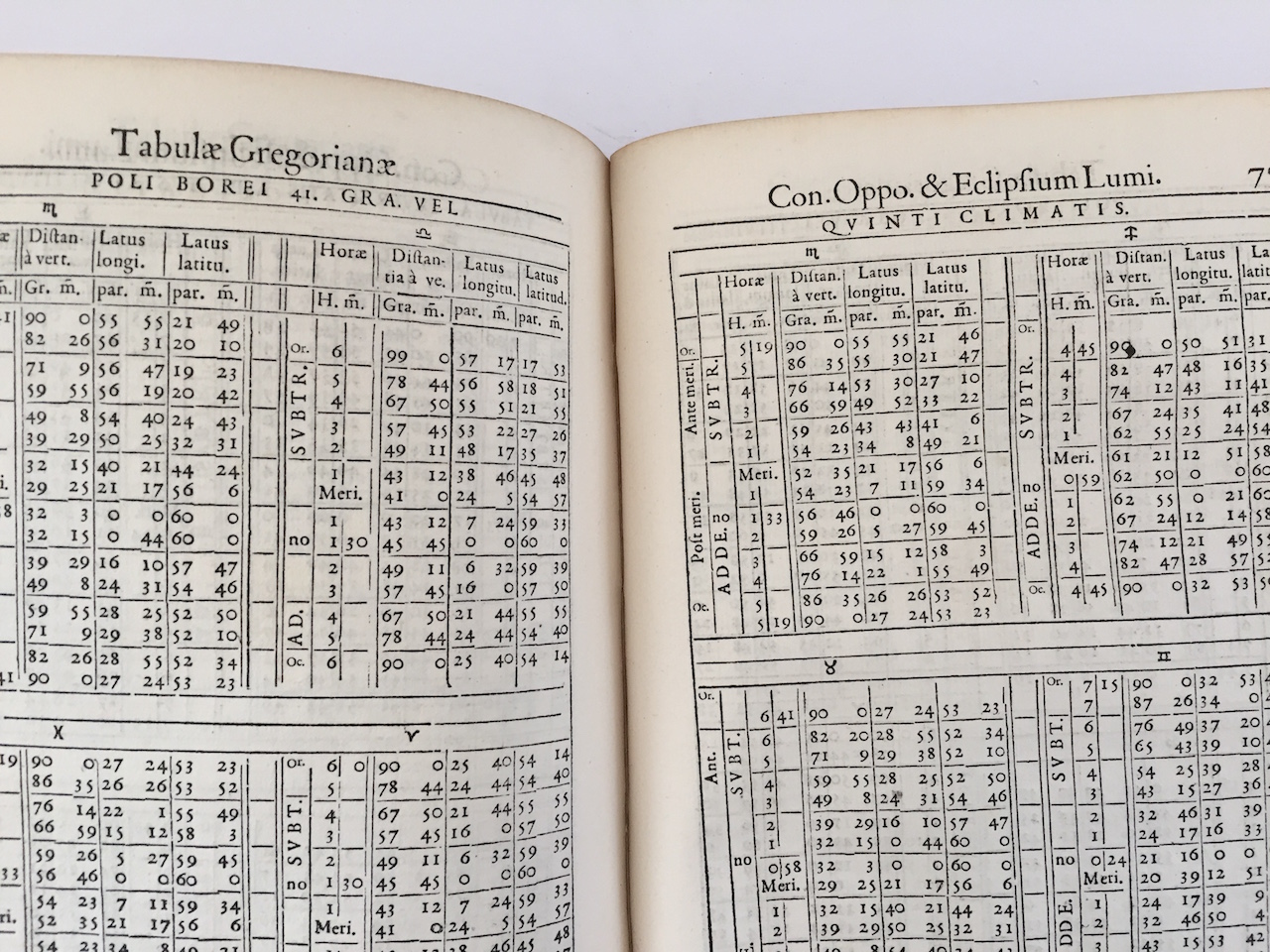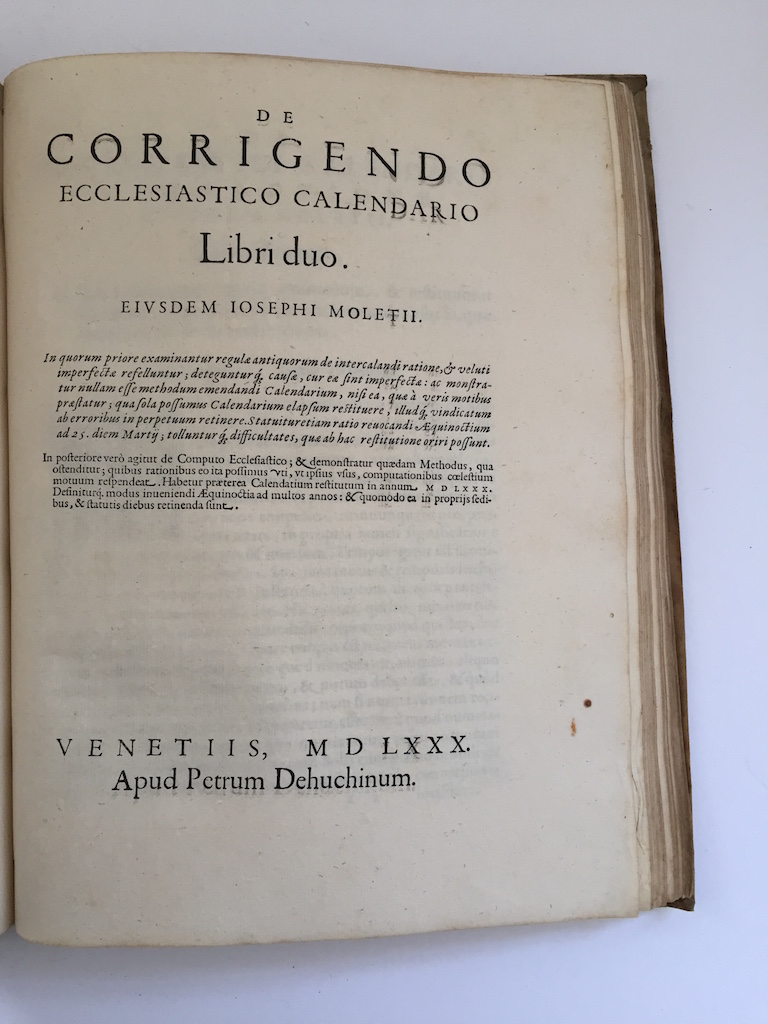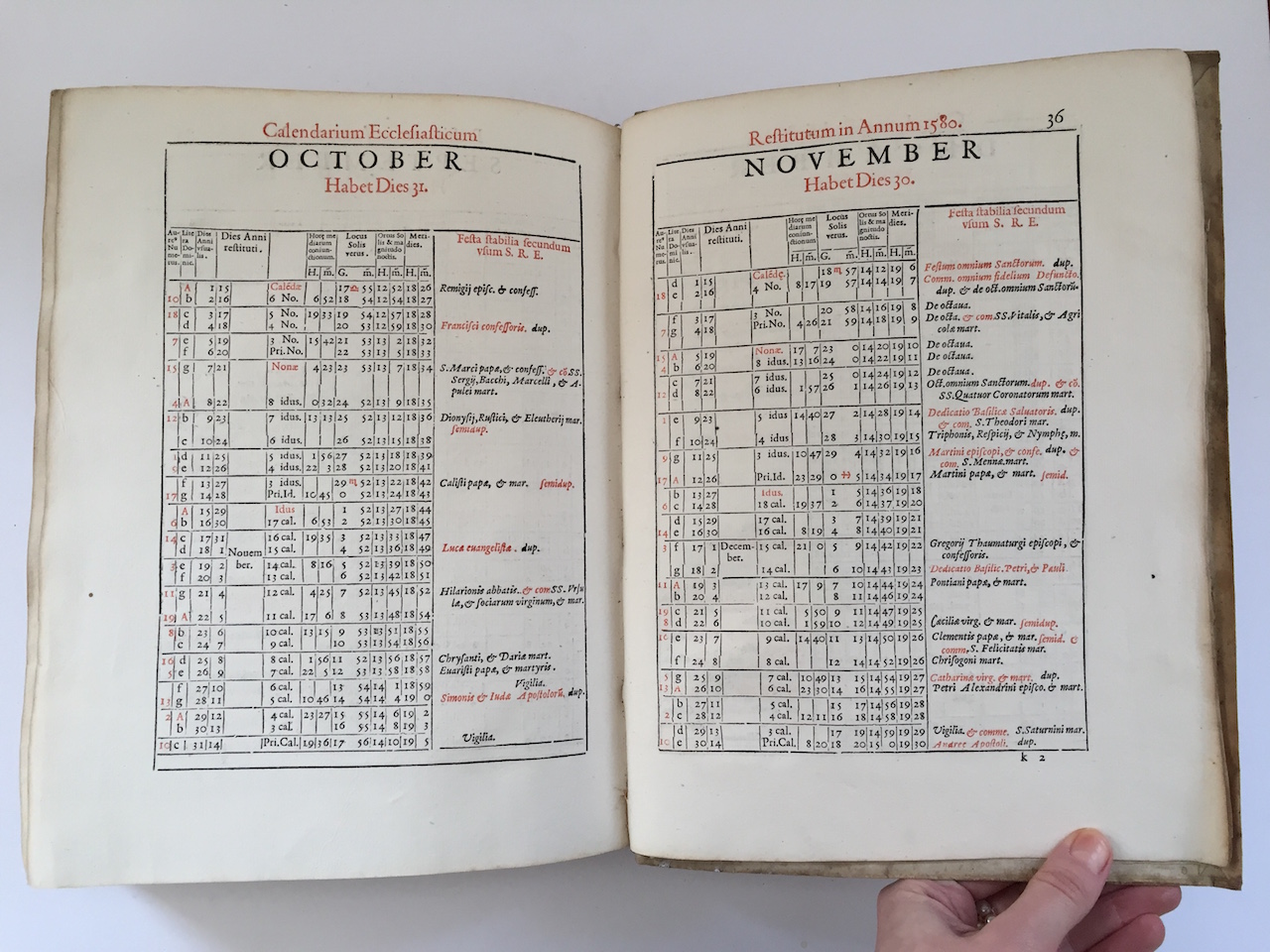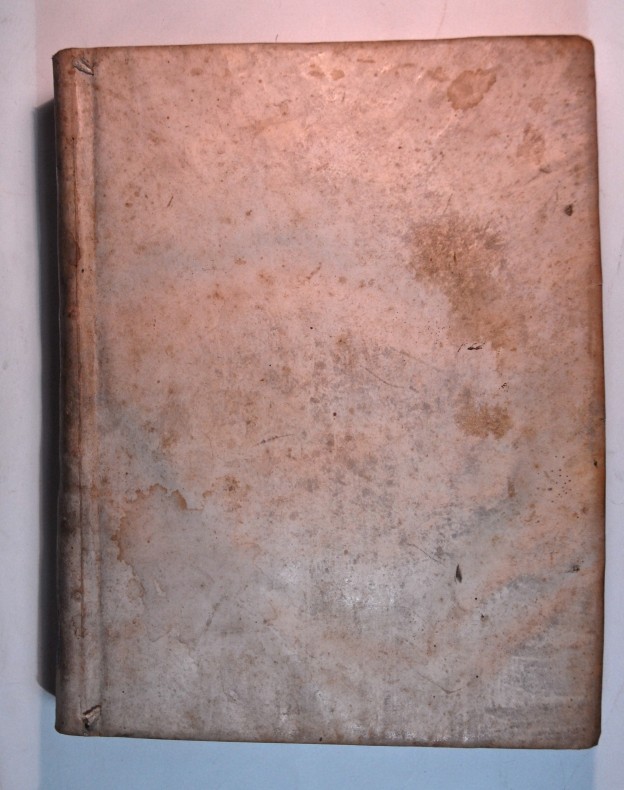MOLETI, Giuseppe
A SPLENDID COPY
Tabulae Gregorianae Motuum Octavae Sphaerae ac Luminarium [with] De Corrigendo Ecclesiastico Calendario
Venice, Petrum Deheuchinum, 1580£5,750.00
FIRST EDITIONS, large 4to., 2 works in one, ff. (viii) 50, 88 +37 (i). Roman letter, woodcut initials and ornaments, couple of astronomical diagrams in text. 88 ll. of astronomical and mathematical tables in first work, within printed line border, 13 of the ecclesiastical and solar calendar in second, the former printed in red and black. Jesuit library stamp and ms case mark in blank portion of t-p, early ms price at head, deaccession label on fly, marginal wormtails to final ll., well away from text. A splendid copy, with wide margins on very thick paper, crisp and clean in contemp. limp vellum, lacking ties.
Moleti (1531 – 1588) studied mathematics at the Jesuit college in Messina where he was a pupil of Maurolico, and published several works on geography and astronomy prior to his appointment as scientific tutor to the young prince of Mantua, Vincenzo Gonzaga. His important Dialogue on Mechanics discusses the problem of the speed of falling bodies of different weights and anticipates the famous Tower of Pisa experiment of Galileo. In 1577 he took up the chair of mathematics at Padua and that year was asked his opinion by the Roman Congregation appointed by Pope Gergory XIII to reform the Calendar: His response was the second work comprised here, composed to provide technical arguments in support of the exact correction of the calendar and its astronomical tables he named the ‘Tabulae Gregorianae’ in deference to the Pope. This treatise was then published as an appendix to the astronomical tables of the motions of the fixed stars, the sun and the moon, accompanied by an explanation of the rules of astronomical calculation of the Canons for the Gregorian Tables’ proper use. Moleti rejected the traditional computation cycles, rebasing the calendar on the real motions of the stars. Moleti’s work did not find favour with his scientific peers but was much appreciated in Rome (to the tune of 300 Ducats) where the Pope asked him to continue his computations with the motions of the other planets. Moleti’s tables were calculated on the basis of the Copernican system which, he was the first to realise, Copernicus had based on the exact movements of the heavenly bodies, which was not the case with the earlier Alphonsine tables. This was the earliest practical use by an Italian astronomer of Copernican theory. The resulting Gregorian calendar of course, remains standard to this day. A most attractive copy of an important and very handsome book.
"Questa ediz. va noverata fra le piu splendide del sec. xvi, sia per la bellezza dei caraterri, sia per la qualita della carta e della impressione... Quest'opera redetta per ordine di Gregorio XIII fu quella che procuro all'a maggior fama di distinto astronomo", Riccardi I 164-65.Not in BM. STC. IT or Adams.In stock





